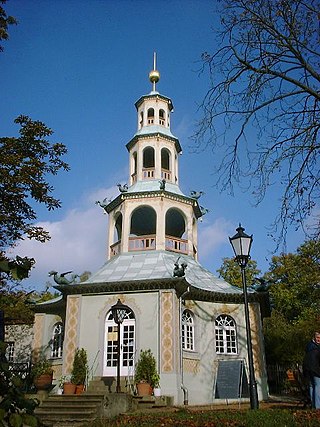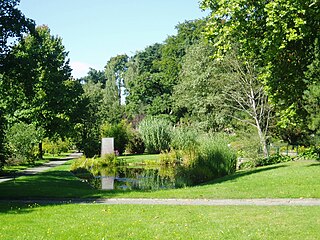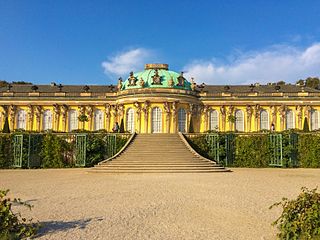Self-guided Sightseeing Tour #7 in Potsdam, Germany
Legend
Guided Free Walking Tours
Book free guided walking tours in Potsdam.
Guided Sightseeing Tours
Book guided sightseeing tours and activities in Potsdam.
Tour Facts
3.1 km
57 m
Experience Potsdam in Germany in a whole new way with our free self-guided sightseeing tour. This site not only offers you practical information and insider tips, but also a rich variety of activities and sights you shouldn't miss. Whether you love art and culture, want to explore historical sites or simply want to experience the vibrant atmosphere of a lively city - you'll find everything you need for your personal adventure here.
Activities in PotsdamIndividual Sights in PotsdamSight 1: Teufelsbrücke
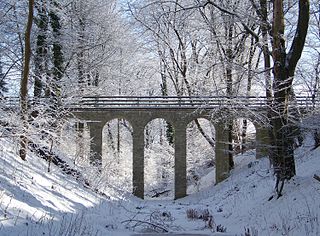
The Devil's Graben Bridge is a five-arched stone viaduct in Potsdam-Bornstedt, planned in 1843 by the architect Ludwig Persius and built as a pedestrian bridge. It leads over a drainage ditch of Lake Bornstedt leading into the Golmer Loch, which was created in the time of Frederick II. The construction of the bridge was part of the landscape park laid out by Peter Joseph Lenné on behalf of Frederick William IV, which connected the Bornstedt Crown Estate with Lindstedt Castle. The Devil's Ditch is now without water. This flows in clay pipes laid underground in 1891.
Wikipedia: Teufelsgrabenbrücke (Potsdam) (DE), Heritage Website
Sight 2: Belvedere auf dem Klausberg
The Belvedere auf dem Klausberg is a building in Sanssouci Park in Potsdam, Germany erected in 1770–72 using Georg Christian Unger's plans.
Sight 3: Drachenhaus
Dragon House is a historical building in Potsdam, Germany, built by King Frederick the Great of Prussia on the southern slope of the Klausberg, which borders the northern edge of Sanssouci Park. It was constructed between 1770 and 1772 in the prevailing Chinoiserie taste of the time, designed to imitate a Chinese pagoda. Carl von Gontard was commissioned to build it. The house served as the residence of the vineyard's vintner.
Sight 4: Modellfort

The fort in Sanssouci Park was a fortress model to represent new gun technology with armor in fortifications at the end of the 19th century. The Krupp company had the model fort built in 1893 in the northwestern part of Potsdam's Sanssouci park in order to convince Kaiser Wilhelm II of the basic principles of the new technology. In November 2004, the ruins were filled in by the Prussian Palaces and Gardens Foundation Berlin-Brandenburg and have not been open to the public since then.
Sight 5: Biologischer Garten
The Botanical Garden in Potsdam, is a botanical garden and arboretum maintained by the University of Potsdam. It has a total area of 8.5 hectares, of which 5 hectares are open to the public, and is located immediately southwest of the Orangery Palace at Maulbeerallee 2, Potsdam, in the German state of Brandenburg. It is open daily; an admission fee is charged for the glasshouses only (2017).
Sight 6: Sanssouci Park
Sanssouci is a historical building in Potsdam, near Berlin. Built by Prussian King Frederick the Great as his summer palace, it is often counted among the German rivals of Versailles. While Sanssouci is in the more intimate Rococo style and is far smaller than its French Baroque counterpart, it, too, is notable for the numerous temples and follies in the surrounding park. The palace was designed and built by Georg Wenzeslaus von Knobelsdorff between 1745 and 1747 to meet Frederick's need for a private residence where he could escape the pomp and ceremony of the royal court. The palace's name is a French phrase meaning "without worries" or "carefree", emphasising that the palace was meant as a place of relaxation rather than a seat of power.
Sight 7: Krongut Bornstedt
The Bornstedt Crown Estate is a former royal estate and, today, a tourist attraction in the Potsdam borough of Bornstedt. It belongs to the ensemble of palaces and gardens of Sanssouci Park, which is a UNESCO World Heritage Site along with other parks and palaces in the area.
Sight 8: Bornstedter Kirche
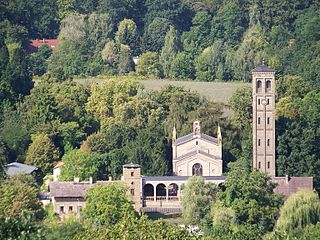
The church of Bornstedt is a church building built in the 19th century in the Potsdam district of Bornstedt. It belongs to the Protestant church district of Potsdam of the Evangelical Church of Berlin-Brandenburg-Silesian Upper Lusatia and is a listed building.
Wikipedia: Kirche Bornstedt (Potsdam) (DE), Website, Heritage Website
Sight 9: Bornstedter Friedhof
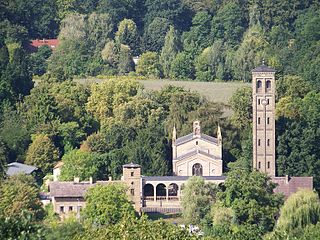
The Bornstedt cemetery is located directly opposite the Bornstedt Crown Estate in the immediate vicinity of the Potsdam Orangery. Not only residents of Bornstedt are buried on it, but also numerous personalities. Theodor Fontane already wrote: What dies in Sanssouci is buried in Bornstedt.
Wikipedia: Bornstedter Friedhof (DE), Website, Heritage Website
Share
How likely are you to recommend us?
Disclaimer Please be aware of your surroundings and do not enter private property. We are not liable for any damages that occur during the tours.
GPX-Download For navigation apps and GPS devices you can download the tour as a GPX file.

